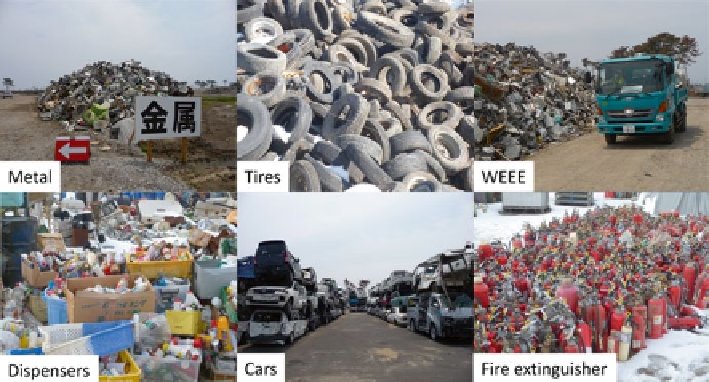Environmental Engineering Reference
In-Depth Information
Fig. 11.10
Disaster waste separation
After use, packaging plastics and plastic bottles are separated by the consumer
and collected by local municipalities. The municipalities also receive money from
the JCPRA for collecting and transport and forward the waste to the recycling com-
panies which won the bid. The recycled materials are sold to companies which
make use of them.
A newly proposed model transfers the responsibility for the bidding process from
the JCPRA to the individual municipalities. The money required for paying the re-
cyclers is then given to the municipalities, which conduct the bidding and pay the
commission to the recyclers. This procedure would strengthen the contact between
municipalities and recyclers, giving both the possibility to optimize according to
the local situation.
11.9
Disaster Waste Management
The Great Eastern Japan Earthquake struck the Tohoku region on March 11th 2011
and caused a major tsunami. More than 20,000 people were killed and a whole coast
line was devastated, leaving huge piles of things that became useless in minutes:
disaster waste.
The disaster waste was collected and separated according to the materials in-
volved (Fig.
11.10
). Many materials such as glass and metal were recycled. Materi-
als that could not be recycled were converted into energy. Over a period of 3 years,
all materials that were demolished during the tsunami were utilized.

